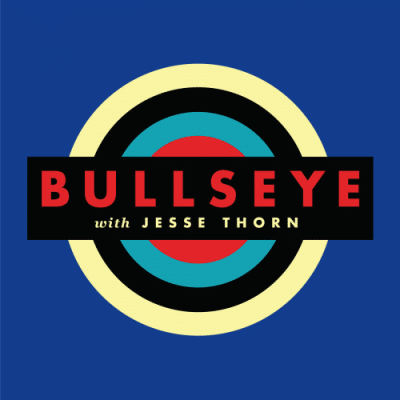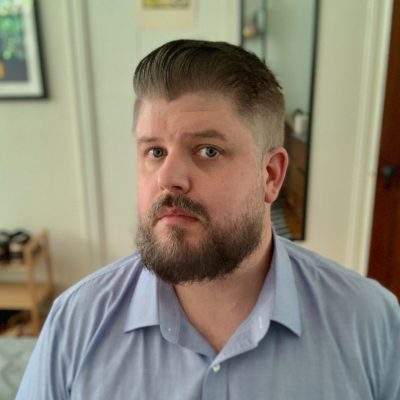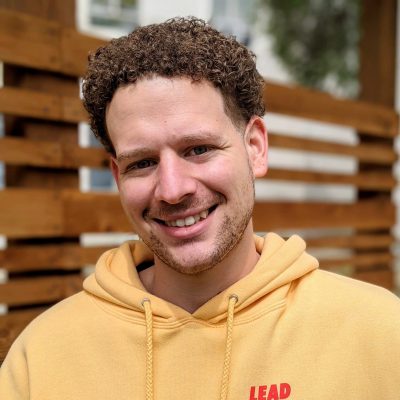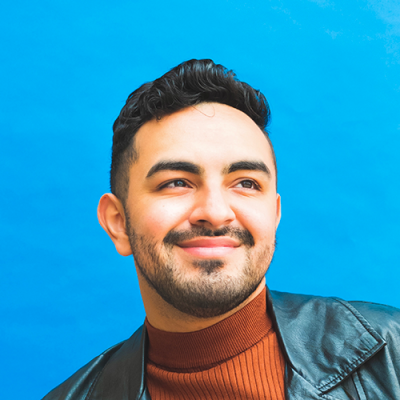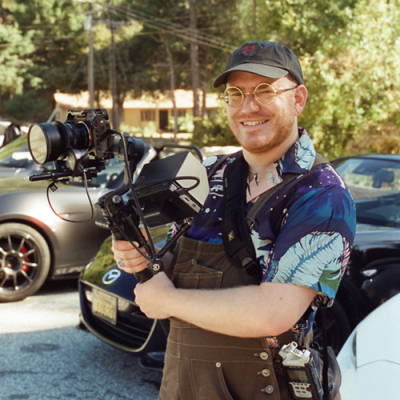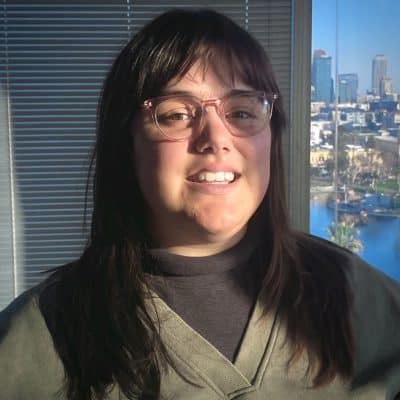Episode notes
Nicolas Winding Refn is the Danish director of the new film Drive, starring Ryan Gosling and Carey Mulligan. Refn had a very specific vision for the film, which included trance-like music and throwbacks to the aesthetics of films of his childhood. Drive is a moody thriller that combines elements of fairy tale, noir, 80s pop and 70s grit. The film won Refn the Best Director award at Cannes.
Drive opens in theaters nationwide on September 16th.
Click here for a full transcript of this interview.
OR
Stream or download this interview now.
JESSE THORN: It’s The Sound of Young America, I’m Jesse Thorn. My guest, Nicolas Winding Refn grew up in the world of cinema. His father, Anders, edited the Danish classics Breaking the Waves and Dancer in the Dark for director Lars Von Trier, among dozens of other films. He grew up in Denmark, but spend his teenage years in New York City. He briefly attended the American Academy of Dramatic Arts before being expelled, allegedly for throwing a chair into a wall, and passed up one of six slots at a very prestigious Danish film institute when he had the opportunity to develop what had been his application short film into a feature. That movie, Pusher, went on to become a European cult crime classic.
His new film is his first American production. It’s called Drive. It won Refn the directing prize at the Cannes Film Festival. Its nearly silent protagonist played by Ryan Gosling is a professional stunt driver by day and a getaway driver by night. It’s a movie that somehow both brutal and serene, and because the main character almost never talks, it’s tough for us to encapsulate with a clip of dialogue. So instead, suffice it to say that on those evenings when he isn’t committing a crime, the protagonist called the driver cruises the roads of Los Angeles listening to music like this.
Nicolas, welcome to The Sound of Young America.
NICOLAS WINDING REFN: Thank you.
JESSE THORN: It’s really great to have you on the show. I want to ask you, having only seen one passing reference to you throwing a chair into a wall at the American Academy of Dramatic Arts, I thought I would go to the horse’s mouth and find out what got you booted.
NICOLAS WINDING REFN: It was a table instead of a chair. It was great because I hated authority anyways, so it didn’t turn out the way I thought it was going to be, but that was maybe good, because if it hadn’t maybe I wouldn’t be sitting here. So I was the happiest person smashing a table into the wall and being told that was unacceptable.
JESSE THORN: I read somewhere that The Texas Chainsaw Massacre was the movie that made you want to make movies, which I thought was particularly interesting in light of the fact that your dad was an editor and director.
NICOLAS WINDING REFN: I grew up in New York with my mother and my step-father who were photographers. Growing up in what you would call a Scandinavian socialistic household of upper class New York, anything that was actually American was considered Fascist and everything that was Europe was great, especially European cinema of the 60s, the French new wave and sorts. Growing up, if you couldn’t rebel with your music — because my mother had photographed Jimi Hendrix and so forth — I turned to genre movies as my rebel without a cause, and that would surely get them pumped because they thought it was the vilest thing to see, and tracking down extreme cinema. But it wasn’t really until I was 14 that I saw the Texas Chainsaw Massacre, it was a double feature in New York at Cinema Village that I realized to me film was an art-form. I’ve always been very fascinated by images, maybe that’s because I’m dyslexic and I didn’t learn how to read until I was 13, so images became very much my understanding of story telling.
JESSE THORN: You’re also colorblind, right?
NICOLAS WINDING REFN: Yes, I’m colorblind, I can’t see mid-colors. That’s why all my films are very contrasted, if it were anything else I couldn’t see it.
JESSE THORN: This was a film that was originally brought to you by Ryan Gosling, who’s the star of the movie. Did he tell you at the time why he wanted to meet with you?
NICOLAS WINDING REFN: Yes, I recall but I was so stoned I couldn’t remember what he explained to me.
JESSE THORN: It seems like a bad idea to get stoned when you’re about to meet with a huge movie star.
NICOLAS WINDING REFN: It’s a little more complex, because – – I had no aspirations of working in Hollywood. It was not something that I set out to do. It was perfectly content to stay in Europe and make the kind of films I make in that arena. I guess after Valhalla Rising I kind of felt, well, maybe I should try to do a movie in Los Angeles; maybe it wouldn’t be that bad. It would also be an interesting obstacle to work within, because it would probably be in a much more controlled environment than I was used to.
I was offered a script by Paul Schrader that Paul had written called The Dying of the Light, I actually got Harrison Ford to play the lead. I was really interested in doing a movie where I got to kill Harrison Ford. And then, as it always does in Hollywood, it began to unravel. What you thought was the head began to unravel. Suddenly Harrison didn’t want to die, maybe, and blah blah blah, and I was like, oh dammit. I postponed my own film back in Europe and gone to Hollywood and, of course, ended up in development hell.
While this was going on I would come to LA at four days a trip because I just got a new child, and I couldn’t be away for a long time. One of the times that I came here at a critical point in the collapse of Dying of the Light, I’d gotten the flu coming in so I was pretty out of it. Harrison got me these anti-flu drugs. I don’t do drugs anymore and I haven’t done them for a long time, so it didn’t take a whole lot of American anti-flu drug to make me as high as a kite.
JESSE THORN: Just the idea of Harrison Ford getting you some special drugs that only Harrison Ford has access to, it’s almost like getting amphetamines from Elvis.
NICOLAS WINDING REFN: If you think about it it’s like the perfect party. I was there, and everything was unraveling and I was so out of it it seemed surreal. Then I got a call asking if I would have time to have dinner with Ryan Gosling. I’d never met him, we’d never crossed paths. I was, yeah, sure, why not. That morning, they sent the script over called Drive that I read, but I couldn’t remember it because I was so stoned when I read it.
I got a taxi that came to the restaurant and Ryan was already there because I couldn’t find the restaurant, I was quite delayed. Ryan was terrific, so courteous, respectful, nice, professional, and I was completely zoned out. It was basically impossible to have a conversation about anything besides music and films, a little bit about my films. After we were through with dinner I asked him to take me home, because I can’t drive a car and I just needed a ride home, which of course was a strange thing to do because it was like a blind date that was about to go terribly wrong.
He was like, yeah, absolutely, sure. It was all the way in Santa Monica that was quite a long trip. We got into his car and we were driving along the highway in just awkward silence. I liked him so much; even though I was out of it I knew that the man was very unique in his aura around him. So we’re sitting there in silence and Ryan turns on the radio to break the silence, and REO Speedwagon’s “I Can’t Fight this Feeling Anymore” starts to play. I am very emotional because I’m both ill and high at the same time, flying as a kite. I actually started to sing the song, because I love REO Speedwagon, I love that song it reminds me of my youth. It almost brought me down memory lane of where I grew up, and it’s a very much LA driving song.
There I am, singing this song, and probably obnoxiously, and then I start to cry. I turned to Ryan, for the first time, and I looked at him in the car, and I just screamed in his face, “I know what Drive is. It’s going to be about a man that drives around in a car at night and listens to pop music because that’s his emotional release.”
Ryan very quickly just caught up on that and just nodded and was like, got it. I’m in. And then we did it.
JESSE THORN: I want to play a scene from the movie. This is one of the only scenes with enough Ryan Gosling dialogue for it to qualify for being played on the radio. In this scene Ryan Gosling is working at a garage that is owned by a character played by Bryan Cranston who folks might know from Breaking Bad. The character Irene, who becomes his love interest, has just met him but conveniently comes back in with a car problem.
Ryan Gosling’s character in the film is very very quiet. There are very few lines of dialogue for Ryan Gosling. Was that the case when you got the script that had been being developed as a more traditional action movie starring Hugh Jackman for a long time?
NICOLAS WINDING REFN: It was a different kind of character at that point. When Ryan and I began to re-think it with Hoss [Hossein Amini], it was really about – – I had this idea that I wanted to do a fairytale in Los Angeles, in terms of building characters that were larger than life. The drive in my film becomes a larger than life aspect because his silence is what makes him an enigma. He is a man who has no past, and as Ryan said, he didn’t see this guy as a man who did small talk. He didn’t engage in conversation unless he was asked or needed something, because he’s in a sense completely separated from the world.
That also eliminated a lot of dialogue because then there was no point in a lot of conversations, which is good. Silence in a movie like this is sometimes so much more engaging, especially when you have action because action is all visuals and emotions. The idea that the drive was half man, half machine, meaning that by night he’s somebody else and by day he’s a human being, at night he’s a hero. It’s one of the songs in the film. The idea that through the movie he transforms himself into a hero. That kind of a character is very similar to the characters in my previous movies, so it’s a kind of transformation theme that I’ve been subconsciously very obsessed with.
JESSE THORN: Let’s hear a little bit of the song that ends up being a kind of closing title theme for the film, it’s called, “A Real Hero,” it’s by College.
JESSE THORN: You are originally from Copenhagen, you live in New York City, you don’t have a driver’s license. As a guy who grew up in urban San Francisco and moved to Los Angeles, I can only imagine what being tossed into the weird world of Los Angeles was like. There’s a lot of hyper reality in LA and a lot of simulacra. It’s just a weird place. It’s so central in this movie. Was was it that made you want to take this fairytale idea and put it specifically in Los Angeles and not, say, out in the desert of Utah or Chicago or something like that?
NICOLAS WINDING REFN: It was the sensibility that Los Angeles was almost like the back drop because it was this illusioned world that the Ryan Gosling character lives in. There was also a personal need to experience Hollywood in it’s pure form as a European filmmaker. Coming to America, I felt I might as well go all the way, so I wanted a house in the hills with a swimming pool and an orange tree.
JESSE THORN: At one point you had an editing suite at the house. Carey Mulligan was living at the house because she was in town and didn’t have a house in LA, Ryan Gosling was sort of living in the house, and you were all just kind of getting up in the morning or – – I don’t understand exactly the chronology, but in my mind Ryan Gosling was building the car that he drove, you were re-writing the script. It sounded insane to me.
NICOLAS WINDING REFN: Insane in a wonderful way because it was very collaborative in the sense that it was all about how we could entangle with each other. It was like pure 70s film-making, all we needed was a lot of cocaine and it would have been an all nighter. I think that, especially – – my parents came and stayed with us. Then it was really a full house. Three editors and my parents and my kids and my wife and friends and Carey and Ryan and everybody else was always open to come by. It created a little bubble for us.
We had our little own world and Ryan Gosling and I would always go drive around at night, living the characters and kind of developing the film, eating at The 101 which was a famous diner that was near my house. The house was on Bronson Avenue, which was ironic because I made a film called Bronson. There were so many things that was like living the illusion of Hollywood, which very much transpired into the film.
JESSE THORN: I find, as a city guy, that Los Angeles is an alienating place for me. I feel separated from everything. I wonder if you felt that way about Los Angeles when you moved here, if you felt that weird separation from the world around you.
NICOLAS WINDING REFN: Because LA is all about movement of cars or being in houses, it automatically separates you from each other. What’s weird about LA, it’s like, either you move or you sit still. Interaction with human beings is always an effort you have to drive to. It’s not like New York or Paris and London or Chicago in so far as where you basically just walk out the door and you’re surrounded by millions of people that automatically interact with you.
That was what was so unique about Los Angeles and why I very much enjoyed my time there was that it was a bit like stranger in a strange land. It was like coming to a science fiction world where nothing really seemed real. Everything still looked like we were back in the 80s. It’s very much a city that hasn’t left the 80s.
JESSE THORN: The film does have that 80s feeling, not just because of the music. It reminded me a lot of – – I’m not a great cinephile, but maybe Michael Mann’s first movie Thief with James Caan. That quality that Mann does so well of quiet passage through the world. That idea of executing your job calmly, silently, and beautifully.
NICOLAS WINDING REFN: Once the fairytale nature was incorporated, it automatically set the film out of place and time. The characters themselves play archetypes, but because the city of LA still feels very much like an 80s arena, and combining that with a European electronic score that Cliff Martinez composed, which is very feminine and has a very much retro-sensibility to it transports you into a time where you can’t really define it. Even though they have cell phones and text messages and e-mails, technology is not a big part of the film. Albert Brooks plays a movie producer who produced films in the 80s. Ron Perlman wears a track suit and runs a pizzeria in the valley. A lot of it was reminiscent of the past, but that’s okay. That’s what mythology is, it’s about past in a sense. If you look at films of Melville or Sergio Leone or Sam Peckinpah or Michael Mann, a lot of it deals with heroes that have difficulties connecting to our world. Clearly Drive is within that category.
JESSE THORN: In fact it seems like many of his deepest connections are to objects. Not just his car, but his gloves, his driving gloves, the satin baseball jacked that he wears.
NICOLAS WINDING REFN: You can see that he’s pure fetish. But then I’m a fetish filmmaker, so I can only shoot what I like to see.
JESSE THORN: I want to ask you about Albert Brooks in this movie. He’s essentially the primary villain in the film, and he is – – Albert Brooks is certainly a hero of mine and probably one of the ten or twenty greatest comic minds of the past 50 years. He is not someone who I think of as scary, but he’s very scary in the film. I wonder how his name even came up for consideration when there are a thousand different scary guys in Hollywood whose primary characteristic is that they’re scary and they look scary on screen and they sound scary when they talk, and you could have just picked one of those dudes.
NICOLAS WINDING REFN: Hollywood casting is a lot about lists. The financiers like to do lists of people that they would consider commercially in various set ups. There were a lot of great actors that were suggested to me that are very scary and had played a similar role and therefore knowingly could do it again.
In theory, all that is perfect, and yet it is also wrong. One of the surprises – – I’ve always wanted Albert Brooks He was my first thought, and I’m not an expert on Albert Brooks I live in Copenhagen, I just remember him a little bit from the 80s in New York when I was a teenager.
JESSE THORN: I love the idea that Albert Brooks was always your first choice. Ever since I saw The Scout I wanted to make a movie with Albert Brooks as the bad guy, or something like that.
NICOLAS WINDING REFN: When I came up with his name in my head it was more like, that was somebody who could be fun to work with. Clearly he had the acting ability to do it, that was certainly not the issue, and he had the physique to be quite frightening in the sense that he’s the kind of guy that would stab you in the back with a razor. What really cemented my belief in that it would work was that he was like a volcano of emotions. Albert, of course, had never played a bad guy or killed anybody in a movie, so that was also a fun way to surprise the audience, because they wouldn’t predict how this was going to turn out.
JESSE THORN: There’s something you can see when you look into his eyes, especially in the film, but it’s the combination of brilliant intelligence, you can just look at Albert Brooks’ eyes and see that he’s brilliant, and a ferociousness, that’s funny, because it’s the qualities of a movie producer, it is also the qualities of a murderous gangster.
NICOLAS WINDING REFN: After I spent an hour with him in the morning having coffee I kind of felt that this guy was essentially going to kill somebody, so let’s do it in a movie. And that’s how I offered him the part.
JESSE THORN: You have a lot of experience directing brutal violence, it’s been an element of a lot of your films. Do you feel like you have a sense of what a certain kind or degree or length of violence will do to an audience or how it will affect an audience? I felt physically, frankly, affected by the violence in the film, and I felt that must be a choice.
NICOLAS WINDING REFN: It’s not like I plan or do a mathematical equation. I do believe that art is an act of violence.
JESSE THORN: What do you mean by that?
NICOLAS WINDING REFN: Art is meant to penetrate you. Violence doesn’t have to be an act of physical violence, it can be emotional violence, and it doesn’t have to be destructive, which can be a violent emotion, but not necessarily a bad one. The DNA of art and war is very similar. It’s two very powerful forces in our world that takes up a lot of our time; but, where war destroys, art inspires. In my film I always approach violence like sex. It’s all about the build up. The climax itself is a mechanical procedure that we as an audience know is not true, so my job is to make the build up so engaging so that whatever happens in front of us actually affects us, but it only affects us because we believe the emotion before it.
The characters that I go through a lot in my movies, violence is part of their catharsis. They have to go through extreme pain and suffering in order to obtain what they’re meant to be.
JESSE THORN: Well Nicolas, I really appreciate you taking the time to be on The Sound of Young America.
NICOLAS WINDING REFN: Thank you very much for having me.
JESSE THORN: Director Nicolas Winding Refn won the directing reward at the Cannes Film Festival for his film Drive, which will be released to American theaters September 16. It stars Ryan Gosling and a host of other brilliant folks, and it is by turns a beautiful and brutal and really remarkable film. Thanks again for coming on the show, Nicolas.
NICOLAS WINDING REFN: Thank you.
Our transcripts are provided by Sean Sampson. If you’re interested in contacting him for transcription work, email him here.
In this episode...
Guests
- Nicolas Winding Refn
About the show
Bullseye is a celebration of the best of arts and culture in public radio form. Host Jesse Thorn sifts the wheat from the chaff to bring you in-depth interviews with the most revered and revolutionary minds in our culture.
Bullseye has been featured in Time, The New York Times, GQ and McSweeney’s, which called it “the kind of show people listen to in a more perfect world.” Since April 2013, the show has been distributed by NPR.
If you would like to pitch a guest for Bullseye, please CLICK HERE. You can also follow Bullseye on Twitter, YouTube, and Facebook. For more about Bullseye and to see a list of stations that carry it, please click here.
Get in touch with the show
People
How to listen
Stream or download episodes directly from our website, or listen via your favorite podcatcher!
